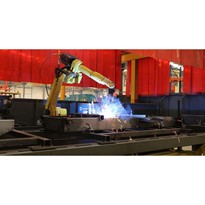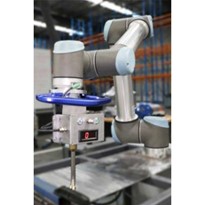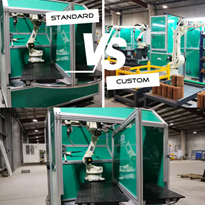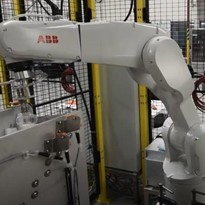The following list of system components in a dedicated robot welding system are manufactured by a single supplier (known as Single Source), with seamless integration between all components.
- Robot Manipulator designed for robot welding
- Robot Controller
- Welding power source integrated within the robot controller
- System teach pendant designed for welding operations with clear intuitive easy to learn programming
- Wire Feeder system with servo controls integrated with the robot controller
- Robot Welding Torch with integrated safety shock sensor
- Servo Positioners and integrated external axis controller
- Welding Software controlled through the system teach pendant
- Standard & optional features focussing on robot welding operations
- Programming through the system teach pendant as standard
- Off Line Programming software, for programming at a PC while production is underway.
- Automatic Robot Programming designed specifically for robot welding operations
- Welding Tables data within the robot controller, for automatic weld settings & recommended robot speed & weld conditions through the system teach pendant
With the most experienced Japanese Industrial robot welding manufacturers such as Panasonic & Kobelco having in excess of 40 years of robot manufacturing experience & over 60 years of welding power source manufacture behind them the capabilities of standard robot welding systems exceed the needs of manufacturers.
Construction features of dedicated robot welding systems
The most obvious construction feature of a dedicated robot welding system is the single controller stack that has the digital welding power source within this control system. A single three phase supply is all that is required to power the entire robot welding system, whether it be for a 350 or 500amp rated MIG robot system, a TAWERS TIG robot welding system or a system with multiple integrated external positioners and tracks to position the workpiece at the optimal attitude.
Other construction features of dedicated robot welding systems include the choice of power conduit & wire feed routes to the robot torch,
- Traditional external Power Conduit external to the robot arm
- Separate Type with the heavy Power conduit internal of the arm, with the wire feed to the torch by a lightweight more flexible wire conduit allowing fast torch & arm movements.
- Through Arm Power Conduit with the entire assembly routed internal to the robot arm, allowing torch access to the internals of fabrications without risk of collision & damage to the Power Conduit.
- Wire feed conduit path through the robot arm, from the welding wire entering the robot at the base axis & feeding the wire up to the servo wire feeder mounted on an upper axis allows maximum unhindered robot movement.
- Welding Torch Power and Gas supply routed through the robot arm from the robot base axis to the upper arm’s power conduit connections.
Communication between systems in a dedicated robot welding system
With the robot controller stack also housing the digital welding power source the high speed communications between these systems has significant advantages
- Co-ordination between the robot welding torch position & the workpiece allows for easy weld control for commonly found fabrications, such as when welding aluminium materials of different thicknesses together. Traditionally robot welding systems would need to be programmed with the robot torch angled to balance the heat input, particularly for aluminium constructions. Dedicated robot welding systems allow the control of a weaving weld to increase the weld output when on the seam side of the thicker material & decrease the weld output when on the seam side of the thinner material – therefore achieving optimal heat input & penetration on each of the material thicknesses. This is possible due to the high speed communications of the power source to the robot controller which is also in control of the robot arm & torch position.
- Monitoring of the actual weld output, weld data monitoring and the weld management through multiple robots is achieved by dedicated robot welding systems & standard wired or wireless networks. This is achieved by the current sensors within the robot welding system measuring the actual weld parameters.
The standard range of processes within dedicated robot welding system reduce the system development time, enable fast & efficient system implementation & simplify training requirements. Standard welding systems include MIG, TIG & advanced Laser Welding systems.
The above features are capable within all Panasonic TAWERS industrial robot welding systems - One System, One Source, One Supplier.
With experience in robotic welding systems in Australian, New Zealand, Japanese & American factories since 1987 we are available to assist you in the correct path to successfully incorporate robot welding systems within your fabrication business.
Orion Automation Systems Pty Ltd - 100 % Robot Welding













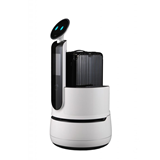


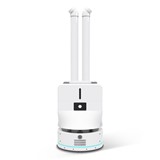
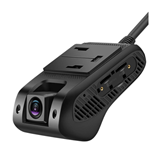

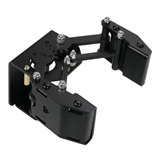


-205x205.jpg)





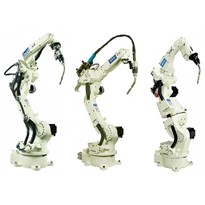
-205x205.jpg)
